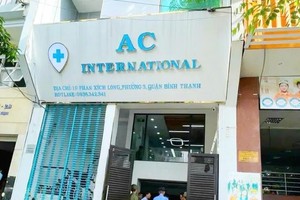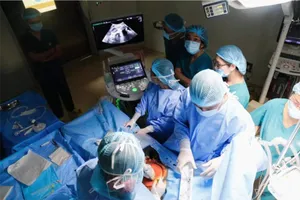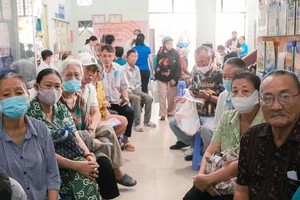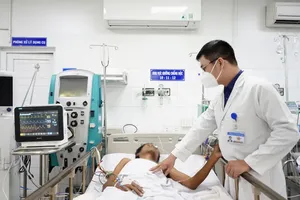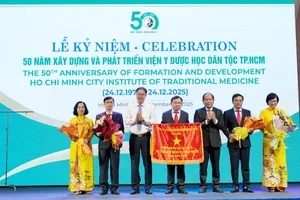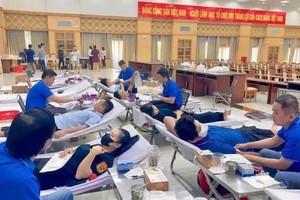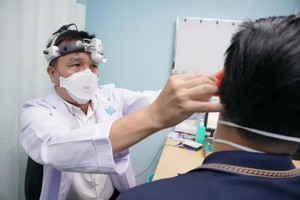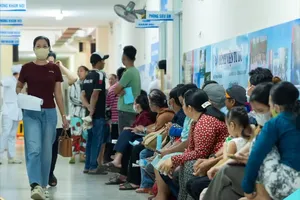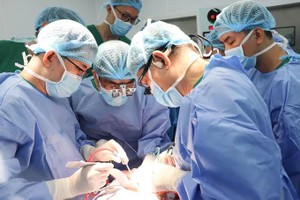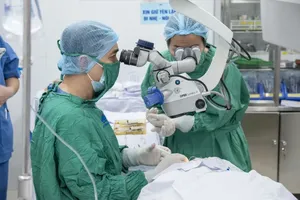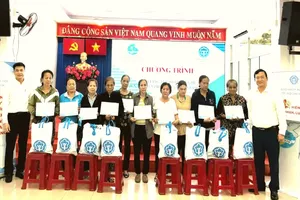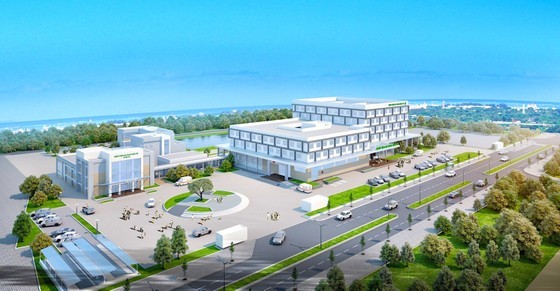 |
An artist's impression of Nha Be Hospital which will be put into operation in 2025 |
At the recent job fair organized by the Ho Chi Minh City Department of Health, no young doctors registered to work at medical facilities in Can Gio district and many other suburban districts. This shows that specific policies and more radical solutions are still needed to attract doctors to remote areas of the city.
At the end of 2022, Nha Be authority started the construction of the local hospital on a land area of 3 hectares, including 2 blocks of 4-storey and 6-storey buildings, 300 inpatient beds along with examination rooms, paraclinical area and four negative pressure operating rooms with a total investment nearly VND500 billion (US$ 20,869,014).
According to Director of Nha Be District Hospital Dr. Nguyen Huu Tho, the hospital currently has 256 nurses, and doctors, but the facility still needs 400 medical staff for several deep specialties such as orthopedics, and general surgery. He expressed concern because the hospital could only recruit one eye specialist at the job fair.
Due to Can Gio's isolated location, HCMC authorities have paid much attention to the district's health sector by spending much on facilities and equipment so that local inhabitants don’t need to go to big hospitals for examination and treatment.
Medical facilities citywide need 484 doctors and nurses; however, at the job fair on May 18, 244 of 270 young doctors who have just completed an 18-month pilot practice program at a hospital attached to a medical station applied for positions in healthcare institutions. Of the 64 public medical facilities participating in the job fair, 51 facilities succesfully recruited doctors. Among them, Thu Duc Regional General Hospital recruited 21 doctors, followed by Ho Chi Minh City Rehabilitation - Occupational Disease Treatment Hospital employing 20 doctors.
Many medical units mainly suburban districts such as districts 4, 6, 11, Can Gio, Cu Chi, and Binh Tan could not recruit doctors and nurses because there are no registered candidates whereas these districts are in need of 10-20 doctors. At the end of the fair, many medical unit leaders worried about the ongoing shortage of doctors, leading to the inability to invest in equipment and machinery and affecting people's health care.
According to Deputy Director of the Department of Health of Ho Chi Minh City Associate Professor Nguyen Van Vinh Chau, many young doctors still believe that working in grassroots medical centers will not help improve their professional skills so they are not interested in applying. To remove this bottleneck, the Department of Health has advised the city to have policies to attract young doctors, especially in remote districts.
Moreover, in addition to the general regime and policies of the city, local administration also supports additional income and free accommodation. Moreover, hospital leaders will create conditions for postgraduate study to improve expertise and skills to encourage young doctors to work in medical facilities in suburban districts.
Deputy Director of Ho Chi Minh City Department of Health Nguyen Van Vinh Chau also said that the health sector continues proposing solutions to improve grassroots medical capacity, including accelerating the construction project of a hospital in Tan Binh District and investing in modern equipment for medical stations. Last but not least, the sector will have policies on promotion, salaries, and working environment to make doctors feel secure in their long-term contributions.

